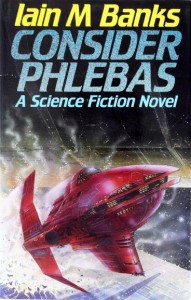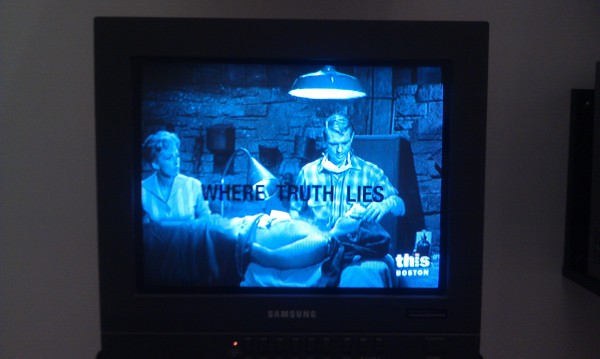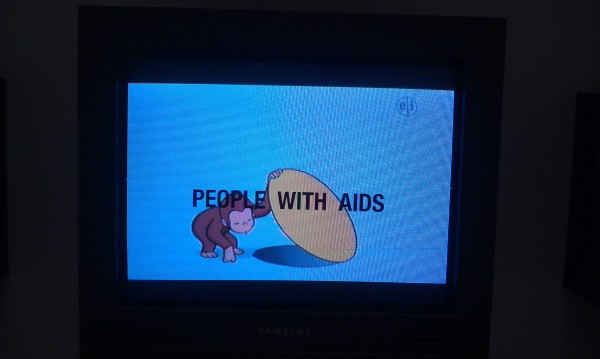Seattle Author Spotlight (3) — Deborah Woodard
This is the 3rd Seattle Author Spotlight (previous ones were Richard Chiem and Maged Zaher) and I plan on running new ones every 10-14 days because Seattle has plenty of talented and interesting writers. So, anyways, here’s the 3rd installment:
And it’s Deborah Woodard!
When I told one of my new Seattle writer friends that I was going to meet with Deborah they told me I’d love her and that she’s “a hidden gem.” And after meeting with Deborah, and our follow-ups, I can indeed say that she is a wonderful writer–and an open, curious and generous person READ MORE >
How I wrote my latest novel, part 2
Last week, I documented how I came up with the initial idea for my latest novel—“Lisa & Charlie & Mark & Suzi & Monica & Tyrell,” which I was then calling “The Porn Novel”—and how I simultaneously began exploring that idea and laying out some basic formal parameters. I also provided a general overview of my general writing process. Today I’ll cover how I finished this initial exploratory period and settled into a stronger sense of the project as whole. Again, my hope is that these posts will prove useful to other writers, and interesting to everyone on God’s green earth. Because I remember very clearly that, during the decade I spent writing my first novel, Giant Slugs, I often felt frustrated and confused. And while every writer must figure ultimately things out for her or himself, some of my strategies and methods might prove theft-worthy—or at least provide a good laugh.
So I’d gotten to the point where I’d translated the original idea (“a pornographic novel that doesn’t contain any sex”) into a more specific approach: six chapters featuring six friends meeting up for six meals. I knew that each chapter was going to be long, to make the absence of salacious material more palpable. And I’d whipped up some character names, and sketched out a list of potential meals.
I also tried estimating how long each chapter would have to be. I decided that, in order to convey the proper feel, the first five chapters should be at least 20 pages each, and that the final chapter (the group dinner) should be longer—at least 30 pages. That added up to 130 pages minimum, which felt like the shortest the project could be. I translated that into word counts, since I think better that way (for one thing, I always single-space my manuscripts, since years of teaching/grading, not to mention taking writing workshops, have led me to despise the look of double-spaced manuscripts). I had a sense that the project would be dialogue-heavy and not contain any long paragraphs, running maybe 250 words/page. Hence, the projected numbers worked out to 5000+ words apiece for chapters 1–5, and 7500+ words for chapter 6. These were just targets, of course, but having a rough idea of what I’m aiming at helps me pace myself, and estimate how long the writing will take.
I also started my writing journal. I use Excel for this and it’s nothing extravagant; I just note each time that I work, and jot down a few words as to what I did. I also track the word counts as they change (using blue for increases and red for decreases). And while this habit of mine is probably the sign of a diseased mind, it helps keep me motivated, encouraging me to “log in” every day, and stick to my routine. It’s not unlike tracking my workout routines, or the movies that I watch. Plus it yields data I can later analyze, which is the only thing that sustains me through the long cold Chicago winter. (Dear NSA, I hear you had an opening recently? Call me!)
Now before you think me entirely insane, consider this. I have a simple litmus test for what enters/exits my writing routine: is it fun? I write a lot, and want to enjoy it, and make it something I look forward to doing. As such, I’m always looking for little ways to reward myself, and to make the situation more pleasant / less stressful.
For example: when I was younger and writing only fitfully, I mostly wrote late at night, even though I never had much success doing that. Writing was something I did after stressing out about it all day, feeling guilty about not having gotten any work done. After a decade or more of that, I switched to writing in the morning—and, believe me, I did not think I was a morning person at that time. But I started living with a yoga instructor who taught early morning classes. So I started getting up at 5 AM and, amazingly, I discovered that I was much more productive and happier when I wrote then. (I also realized that predawn is my favorite time of day.) That experience taught me to examine the rest of my writing routine, and to try making it more enjoyable overall. So my Excel files are in some sense silly, yes—but they are my only friends, and I name them, and I love them.
Here’s a snapshot of the journal that I made:
JonBenét Ramsey’s Pageant Rhymes
Last year at around this exact same time, Bambi Muse, the cute literary Tumblr corporation that is, in many ways, similar to Fox News, published their first ever “Tumblrbook,” and it was Nursery Rhymes by Baby Adolf .
Today, Bambi Muse has published its second ever “Tumblrbook” — Pageant Rhymes by JonBenét Ramsey — and it is, according to me, a delirious occasion. The commotion besetting JonBenét’s book might have a tad to do with the advance praise she’s been accumulating. Adrienne Rich spurted, “Even though I’m merely one of those dense, dime-a-dozen feminists, still, if I were a lesbian tulip and JonBenét were a lesbian tulip then I’d want to be planted right next to her (even though she probably wouldn’t like that too much.” After processing her copy, the girl-boy Gertrude Stein exclaimed “Yes!” so potently that she plucked dear Alice from her slumber (and dear Alice is no light sleeper!) Then the critic FO Matthiessen got his four cents in. “Punchy!” proclaimed FO.
In the coming days, there is supposedly going to be a book party so special, sweet, and spiteful that hardly anyone is invited at all; in fact, nearly no one even knows the chosen date or time.
Well, is all the fuss really formidable? Is JonBenét really the next Anne Bradstreet? Read, and discover for yourself!
REDEMPTION TWO: BETTER THAN EVER OR BETTER OFF DEAD?
In this mini-series the saga of redemption, as frequently manifested in the form of “comebacks,” is investigated. REDEMPTION ONE is here.
In honor of Lindsay Lohan’s birthday, REDEMPTION TWO arrives early.
II. EMPIRICAL EVIDENCE
a. Better Than Ever: Two Cases of Successful Redemption
ANTHONY WEINER
If anyone successfully gave more than enough of himself to the public, it was Anthony Weiner. With explicit twitpics some of us never saw and some of you will never forget, the former congressman’s actions led to a shameful resignation following the virtual “unfaithfulness” to his spouse, Huma Abedin[1]. Weiner did not code the public humiliation of his private life as the ending of his career. On the contrary, he interpreted, and continuously interprets, his public mistake as an opportunity for future growth and greater strength.
The married lives of politicians have always been crucial foundations to their public perception. An extensive cover interview for NYT Magazine in April depicted Weiner and Abedin’s marriage as a normal one, still recognizing the vast impact of the incident on their marriage. Particularly, the demise of the power-couple as it was in quest of a private truth–whether Weiner’s account was hacked–became the first step to achieve a private, family-based redemption. After returning to trust privately, the next challenge for the couple became reaching the redemption that would mark its return to political respectability and place Weiner’s wrongdoings in the past.
Following the scandal, Weiner’s course of action has primarily worked to his advantage, at least according to the press. He asserted that the reason he initially lied was to avoid telling Huma. Once the lie was undeniable, he owned up to his mistake by attributing it to an obscure, but under no circumstances unrealistic, cybersex habit. The fact that he did not realize the sexual acts in question, but constrained himself to the imaginary, undoubtedly ameliorated the position he found himself in following the event. READ MORE >
25 Points on Ideisms: Beginnings Toward the Poetics of Always After

Being a Review of Notes
on Conceptualisms
by Robert Fitterman and Vanessa Place
Notes on Conceptualisms
by Robert Fitterman and Vanessa Place
Ugly Duckling Presse, 2009
80 pages / $10 buy from UDP
As it is high time that our growing faction of Ideists had a manifesto around which they could unite, we, that is, Joel Kopplin and Kurt Milberger, humbly offer these notes toward a report of the history and conceptions of Ideisms with particular emphasis on the practice’s aesthetics, specifically poems.
1) The poetry of Ideism: the hangnail that breeds, that bleeds when finally plucked.
2) Books are bound to remain unread because to really read is a kind of rape.
3) Ideism thinks through houses, beyond their walls and windows, and out into the atmosphere where it burns as falling space junk.
4) Ideism is the eternal window out, the rhombus artfully set before venetian blinds, condensed so as to see the street below to approach the equation: what, finally, is next?
5) The permutations of the phrase reveal the poetics of Ideism. Id-e-ism. I-deism. Id-eism. The symbol multivocates, illuminates, and refuses to condense its referent.
6) Ideist poetry reconstructs new acronyms which compress and describe discourse-specific speak: philistines and neophytes fall down and weep with shame upon the altar of each letter of the new word. READ MORE >
July 2nd, 2013 / 1:08 pm
Three Quotes from Literature about Saint Simeon Stylites
Simeon Stylites, who spent thirty-six year on top of a sixty-foot pillar in the Syrian desert. For most of that time his body a mass of maggot-infested sores.
The maggots no more than eating what God had intended for them, he said.
– David Markson, Reader’s Block
– – –
And her eagerness to learn the preparations he had set himself to teach her was sometimes pathetically touching, and sometimes it frightened him: touching, delicately absurd for there was no mockery in her when, for instance, she affirmed the dogma of the Assumption of the Virgin with that of Little Eva in Uncle Tom’s Cabin, as the only historical parallel she knew; frightening, when she brought from nowhere the image of Saint Simeon Stylites standing a year on one foot and addressing the worms which an assistant replaced in his putrefying flesh, —Eat what God has given you . . .
– William Gaddis, The Recognitions
– – –
These considerations, which occur to me frequently, prompt an admiration in me for a kind of person that by nature I abhor. I mean the mystics and ascetics—the recluses of all Tibets, the Simeon Stylites of all columns. These men, albeit by absurd means, do indeed try to escape the animal law. These men, although they act madly, do indeed reject the law of life by which others wallow in the sun and for death without thinking about it. They really seek, even if on top of a column; they yearn, even if in an unlit cell; they long for what they don’t know, even if in the suffering and martyrdom they’re condemned to.
Gretchen Bender – T.V. Text and Image, 1986-1991
A few months ago I took some photos of Bender’s T.V. Text and Image, an installation of television sets with vinyl lettering. The text and (boxy) sets are from the late 1980s, and the video is satellite television, in some cases live.
Dear Rauan,… (1)
*****
[ this is the 1st installment of my “Dear Rauan” advice column. special thanks to Kim Gek Lin Short for reminding me that I can and should “help people” ]
*****
So, anyways, without further ado, here’s Sue, from the Midwest:
dear rauan,
i hate when men yell from cars “god! i’m so horny!” sometimes when i am walking to Rite Aid to buy Otter Pops because it helps with side effects of global warming, i hear men screaming “god! i’m so horny!” READ MORE >
Consider Phlebas





Consider Phlebas
by Iain Banks
Republished by Orbit, 2008
On Amazon
***
When I think of the best science fiction, I never think of it as actual science fiction. Rather, tales of humanity revealing glimpses into its nature that would otherwise be difficult to convey without the facade of artificial quasars and exotic aliens. “Iain Banks has ruined most sci-fi for me,” said a friend who was recommending the Culture series to me. With the recent news that Iain Banks was suffering from a terminal cancer to his gallbladder, I felt it was time to dive into this long and branching series I’d been hearing about for so long. I started with the first book, Consider Phlebas, which on the surface is a space opera with swash buckling action. It’s set to the backdrop of a war that is taking place between the Culture and the religiously fanatical civilization called the Idirans. The machines of the Culture are more complex than humans and have unique personalities that help calculate/determine their future. When the Mind of a brand new Culture ship escapes into a Planet of the Dead, the two factions race to retrieve it. The protagonist is Horza, a shape-changer sent by the Idirans because he has special access to the planet that the others do not.
The title, Consider Phlebas, comes from T.S. Eliot’s The Waste Land and like The Waste Land, there are mixes of satire and futurism in the chapters that balance fantastic elements with descriptions that make it easy for a reader to envision. Take for example, the description of an Orbital (an artificial planet/ring world) being destroyed by the Culture as a result of the war: “…a single narrow line of blinding white light appeared right across the breadth of the day side of the Orbital, a thin fiery blade of silent destruction which was instantly surrounded by the duller but still perfectly white cover of clouds. That line of light was part of the grid itself, the fabric of pure energy which lay underneath the entire universe, separating this one from the slightly younger, slightly smaller antimatter universe beneath… The Orbital was now a rosette of white flat squares backing slowly away from each other toward the stars: four hundred separate slabs of quickly freezing water, silt, land and base material, angling out above or underneath the plane of the system’s planets like flat square worlds themselves. There was a moment of grace then, as Vavatch died in solitary blazing splendor.” I could see Vavatch’s last moments in my head and marveled at the creative way Banks depicted the scene. There are many such moments and the imagery has a palpable intensity to it.
July 1st, 2013 / 11:00 am









